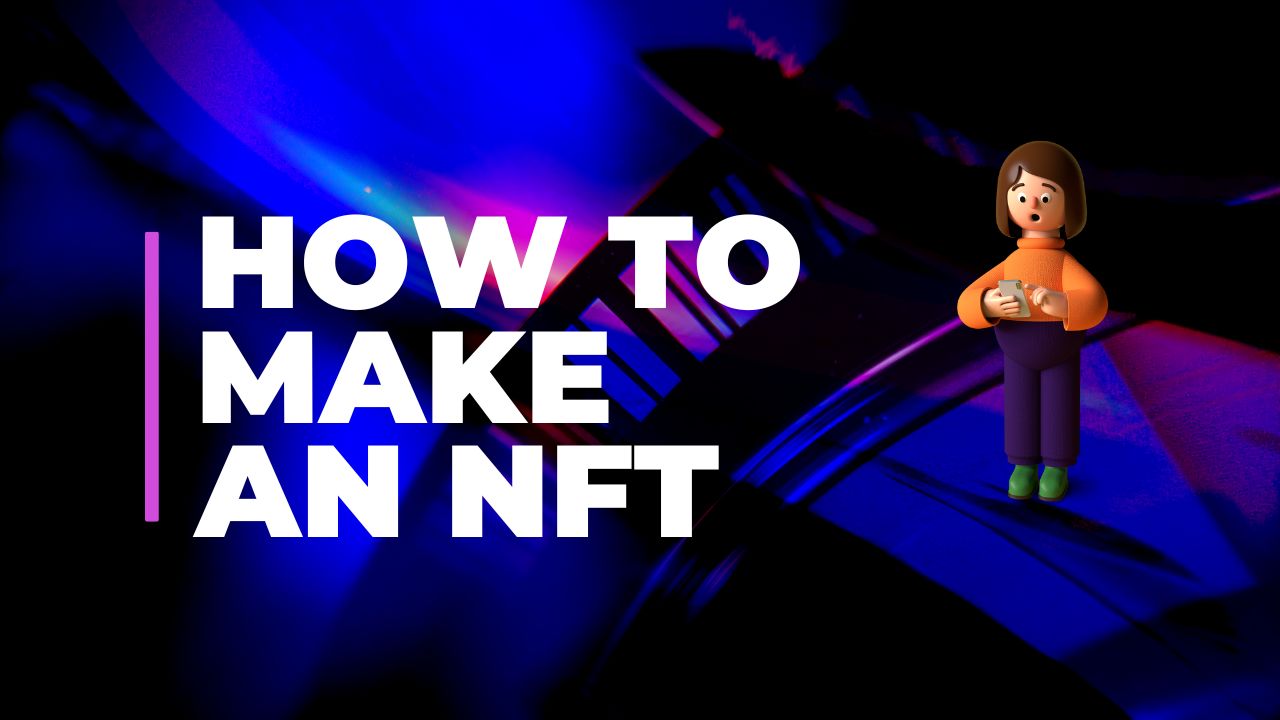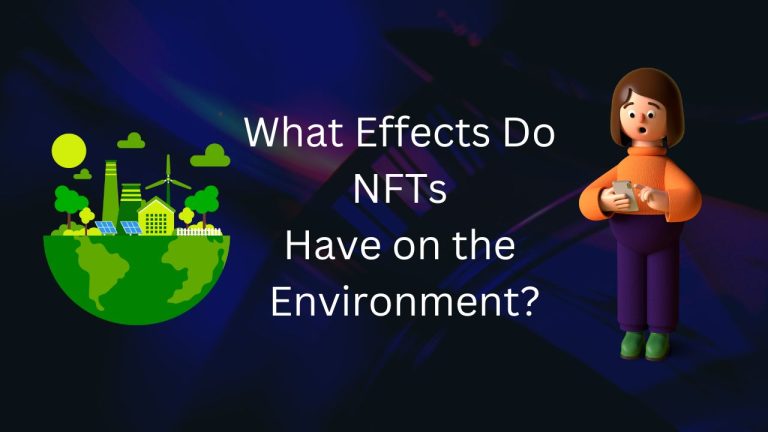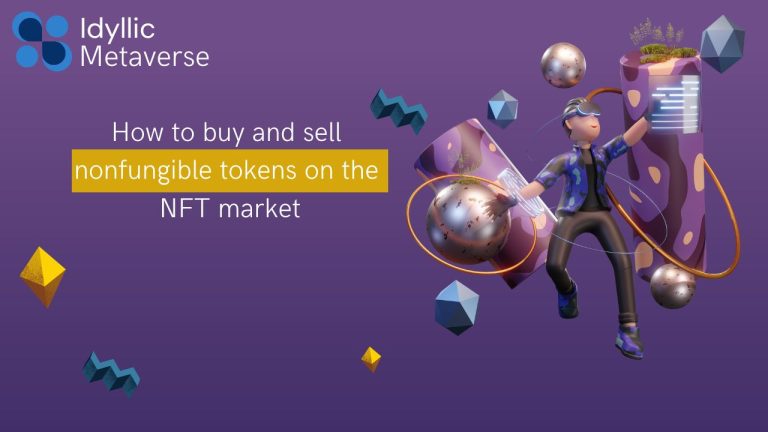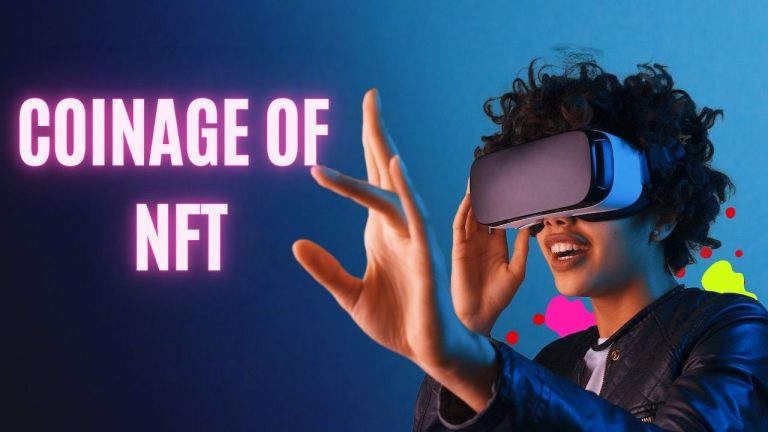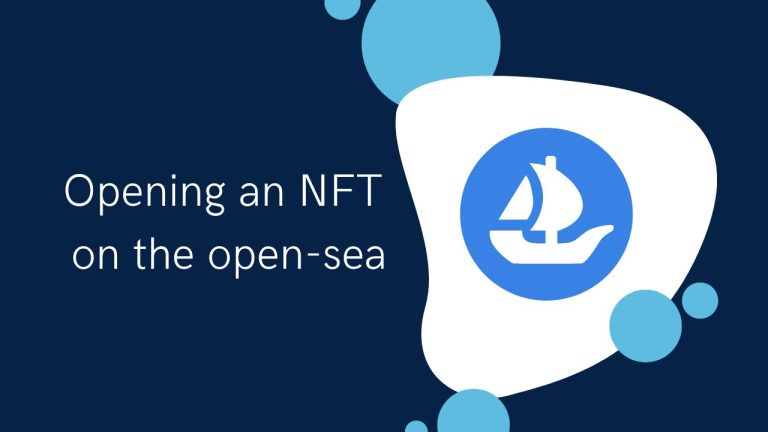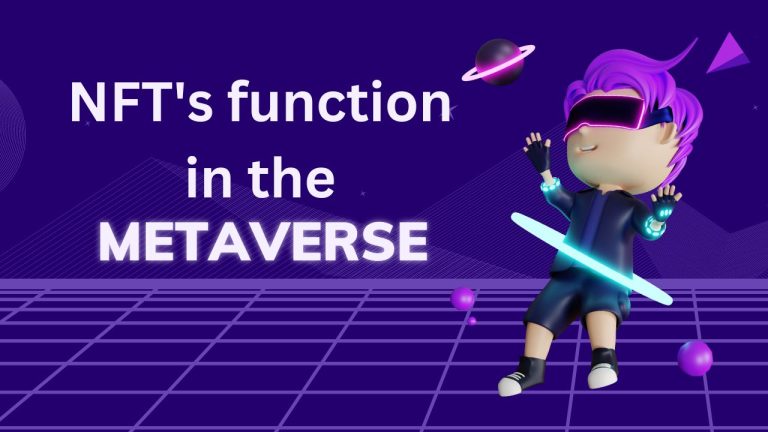An explanation of how to make an NFT and a non-fungible token creation tutorial
A “non-fungible token” (NFT) is a cryptographic asset on the blockchain that represents an immaterial and distinctive digital item like a work of art, a photograph, an in-game collectible, or a tweet that other assets cannot reproduce because of a certain set of properties.
Each NFT is unique, limited, and non-transferable; it can be used as proof of legitimacy and ownership.NFTs can distinguish one another thanks to metadata and distinguishing identifiers like barcodes. The data that makes up an asset is referred to as its metadata. Thanks to metadata, users can buy or sell products using their metadata instead of the entire object.
NFTs are made to resemble the observable characteristics of real things, such as exclusivity, scarcity, and ownership records. However, as fungible goods may be traded and are distinguished by their worth rather than by unique characteristics, they can be exchanged. However, using digital products without the accompanying physical commodity renders them invalid.
Colored coins, which are experimental assets developed on the Bitcoin network in 2012, served as the prototypes for NFTs.The Seven on Seven conferences were held in 2014 at the New Museum in New York City, and as an experiment, the first asset resembling a nonfungible tradeable blockchain marker was created.
Their potential use cases are expanding even while digital collectibles and art NFTs continue to garner the majority of interest in the crypto world. They go beyond the typical use cases like video games and digital art to include fashion, music, academics, tokenizing physical goods, patents, membership sales, and loyalty schemes. Additionally, it is possible to combine the benefits of NFT technology with the capabilities of decentralized finance (DeFi). For instance, nonfungible tokens can be lent and borrowed as well as used as collateral to finance loans.
NFTs can be produced by anyone who wants to share and sell their digital artwork, music, photographs, and other information. A step-by-step guide to effectively joining the nonfungible token revolution is provided here.
An NFT is simple to make using a few simple steps. For instance, users can select their material and get a cryptocurrency wallet. They can decide on a trustworthy NFT marketplace and follow its guidelines. An NFT can be created, distributed to friends, and then purchased by fans.
Knowledge of non-fungible token NFTs
The most expensive Non-fungible token NFT in the history of crypto art was purchased for $69.3 million by a collector of NFTs. It was created by Mike Winkelmann, popularly known as Beeple, and is titled “Every Day: The First 5000 Days.” The 10,000 pixelated photographs of punks in the CryptoPunks collection, which was invented in 2015 on the Ethereum blockchain, are sold for thousands of dollars.
It is reasonable to wonder what these digital works are worth and why collectors are willing to shell out so much money for them.
It took a lot of work for Beeple to create “Every Day,” a collage of 5,000 drawings that referenced every day for the previous 13.5 years. However, it’s possible that the author doesn’t need to make a particularly difficult addition to many successful NFT collections.
As a result, having a clear objective and a high level of creativity is partially important for everyone who wishes to become an NFT artist. Making a Non-fungible token NFT is unquestionably worthwhile to try, even for individuals who lack Leonardo da Vinci’s talent but have a lot of ideas. Additionally, this would be a terrific place to start for professional artists who already have many Beeple-like works sitting dormant in their digital studios, ready to be sold as NFTs.
Truthfully, a piece of innovative and appealing digital art created by an unknown artist will not become as popular as works by celebrities like Canadian singer Grimes’ 10 digital paintings, which have sold for approximately $6 million, Kings of Leon’s NFT releases, which have made $2 million in sales, or an exciting NFT that displays Jack Dorsey’s very first tweet, which has sold for more than $3 million.
Fortunately, developing an NFT is neither expensive, difficult nor technically difficult. Anyone may create an NFT with the appropriate instructions and without writing any code.
Select your content and the format.
The format of the creators’ Non-fungible token NFT must be decided first. Any multimedia file can be used to create a nonfungible taken by them.
It may take the form of a digital painting, a photograph, a text, an audio recording, or a movie documenting a significant event. Non-fungible token NFTs can also be used to represent other types of artistic objects, such as bitcoin collectibles, virtual commodities such as avatars, weapons, and money from video games, as well as digital space in metaverses.
Since it appears like everything digital these days may be an NFT, there is a possibility for creators’ ideas here. Perhaps might be the World Wide Web’s source code, which Sir Tim Berners-Lee designed and sold to NFT for $5.4 million, or it might be a “high-res artistic representation” of professor George Church’s genetic information or the information of the first person to sequence their DNA. Additionally, there is still a market for non-digital tokenized real-world commodities, such as designer shoes, jewels, and real estate, all of which are sold as Non-fungible token NFTs.
The format is completely up to the discretion of the designers. It might rely on their creativity and the theme of their artwork.
Remember that after choosing the sort of content and format they wish to represent as an NFT, creators will need to convert it to the proper file type, particularly if the content isn’t already digital. Most objects are often saved as portable network graphics or files in the graphics interchange format (GIF) (PNG). Portable Document Format (PDF) is commonly used for texts, whereas MP3 and MP4 are typically used for music and video storage, respectively.
How to make Non-fungible token NFTs and mint them
The uniqueness of NFTs determines their worth. Users may want to make numerous exact clones of their creations in certain circumstances. If you sell collectibles, for instance, you may offer various versions, some of which are more unique than others. Since this number will be fixed and your Non-fungible token NFTs become impervious to any changes after their formation, you must choose how many identical copies of a specific NFT you will include within the blockchain in this situation.
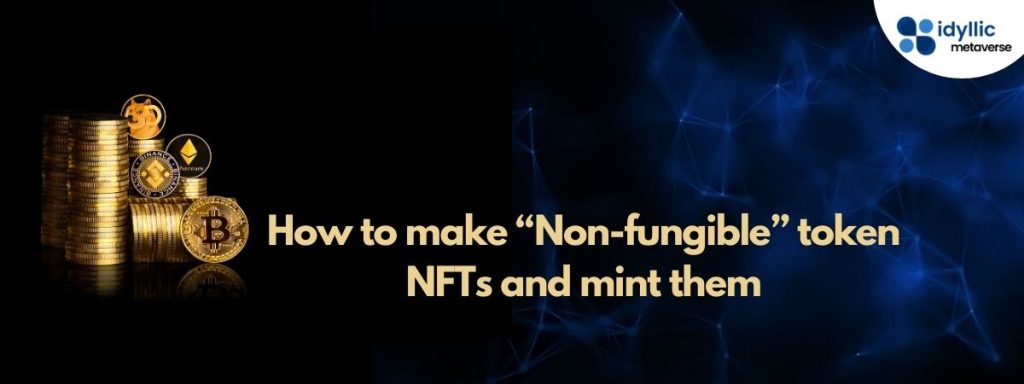
Making a non-fungible token is referred to as such. The phrase refers to the process of transforming a digital thing into an asset on the blockchain. Non-fungible token NFTs are developed and then minted, just as metal coins are made and distributed. The digital item is now more secure, difficult to alter, and tamper-proof after the treatment. When it is later resold or collected again, it can then be purchased, sold, traded, and digitally recorded because it is shown as a nonfungible token.
When the owner of a linked item changes, some Non-fungible token NFT technologies enable ongoing commission payments to the original inventor. Creators can include a royalty clause in their token code to earn passive money from future sales of their digital creations. If their work becomes well-known and gains in value, they may profit financially from it.
Select the Non-fungible token NFT market.
A prospective Non-fungible token NFT’s digital asset must be ready before choosing an NFT marketplace to sell it on.
The choice of a platform is an important step in the process of minting Non-fungible token NFTs, and the optimal decision will rely on a number of factors, such as the types of supported blockchains, supported standards and file types, accessibility, and the price of minting an NFT.
ERC-721 was the initial specification for non-fungible digital asset representation on the Ethereum network. The semi-fungibility offered by the ERC-1155 standard. The ERC-1155 token’s unique identifier represents an entire class of fungible assets, any number of which the user can transfer to others, in contrast to ERC-721, where the unique identifier only represents one asset. The templates by which Non-fungible token NFTs can be either nonfungible or fungible assets are based on the ERC-998 standard.
There is no NFT monopoly held by Ethereum. However, Ethereum is the foundation of the vast majority of platforms. Other non-Ethereum Non-fungible token NFT marketplaces, such as Cosmos, Polkadot, and Binance Smart Chain, to mention a few, are a part of 4blockchain ecosystems.
Each of the Non-fungible token NFT marketplaces operates differently and has different rules, benefits, and drawbacks. For instance, although some NFTs are curated, others are self-service-based. While certain systems make it more economical to generate NFTs than others, some marketplaces do not support particular file types. While some platforms feature straightforward user interfaces (UI), others may be too complex for new users to handle.
There are currently many NFT markets in the cryptocurrency world. Since non-curated platforms offer open access to everyone, they have become a viable alternative to curated ones. Users simply need to register and pay the transaction cost to mint a token in order to upload NFTs onto them.
OpenSea is one non-curated platform that enables users to mint and sell Non-fungible token NFTs as well as access their data and examine statistics. In addition to a sizable number of objects from numerous well-known blockchain games, OpenSea, which was founded in 2017, keeps practically all cryptographic art collections. Users can easily and rapidly generate a nonfungible token for free on the platform thanks to its user-friendly creation interface.
Rarible is a self-service platform that also operates as a mass market and is linked to OpenSea. Although OpenSea and Rarible’s Non-fungible token NFT creation processes are quite similar, Rarible’s functionality differs slightly. For instance, there aren’t as many formats available, and the artworks are smaller. But Rarible has a lot of users and lets people mint tokens before selling them, whereas OpenSea only mints tokens after they are sold.
Curated platforms are pickier about creators than self-service ones are. Creators must fill out an application form with strict selection criteria and a lengthy wait period before they can begin selling their digital material on SuperRare or Nifty Gateway.
Open a wallet and purchase some cryptocurrency.
Any blockchain system must include a cryptocurrency wallet. According to the underlying blockchain concepts, users require wallets in order to access numerous platforms, sign transactions, and maintain their balances. Users need wallets in order to access various platforms, sign transactions, and manage their balances, according to the fundamental blockchain principles.
Consequently, Non-fungible token NFT marketplaces do not require storing user account information, which increases the platform’s security.
To purchase and store bitcoins, a variety of cryptocurrency wallet programs are accessible on smartphones. Many are created especially for people who are new to blockchain technology and can help them understand transaction fees, security, and privacy.
For gaining access to blockchain-based applications, there are many crypto wallets and browser add-ons that are suitable. Some provide further protection with a twelve-word access seed phrase in addition to only an email address and password. The most crucial step before creating a wallet is to confirm that it supports the cryptocurrency used on the platform you plan to use.
On the blockchain, users must pay a gas fee in order to mint a token. A user’s payment to cover the cost of the computer time needed to process and validate transactions on the blockchain is referred to as a “gas charge.” A user’s gas limit is the most gas they are willing to spend on a specific transaction.
Depending on the volume of demand for initiating transactions, gas prices vary greatly. An NFT can be free to mint. But the price could range from $10 to $100, depending on the market. Gas prices are substantially lower (on average) on weekends when fewer people are doing business, which will assist Non-fungible token NFT aficionados in keeping expenses down if they are minting a number of different things.
Multiple-item minting is distinct from double minting, which is the practice of minting the same NFT twice. Users are free to move the same digital object that has previously been minted on one NFT marketplace to another, mint it again, and sell it as a brand-new Non-fungible token NFT. Users must consider any potential negative effects on their reputation, such as the devaluation of the stated NFT and any subsequent digital object the user may desire to sell, as this could damage the user’s credibility. The best way to prevent duplicate minting is to add an invisible code to a digital item’s file without materially changing the item’s outward look.
Users will then need a mechanism to receive bitcoin and change it into conventional cash whenever they want, so they need to download the cryptocurrency wallet app on both their smartphones and desktop computers in order to view Non-fungible token NFT sales receipts.
There are two primary methods for turning cryptocurrencies into cash that can then be transferred to a bank account. You can first use outside sources like cryptocurrency exchanges, ATMs, and debit cards. Utilizing a peer-to-peer (P2P) platform is the second choice. Both approaches are easy and secure. However, exchanging your cryptocurrency for cash at a fixed rate utilizing a peer-to-peer transaction is typically faster and more discreet.
Obey the guidance provided by the “Non-fungible token” NFT platform.
In order to produce a nonfungible token, authors must adhere to specified guidelines that are specific to each Non-fungible token NFT marketplace.
The marketplace often requests that customers upload a file that they wish to convert into an NFT along with a title and a brief description. In order to draw collectors and increase their chances of making a profit, users of the Non-fungible token NFT platform should invest some time polishing their nonfungible tokens. They will also have to decide whether to create a single token or a collection after uploading the digital object.
Second, fixed prices or auctions are the two available ways to sell Non-fungible tokens NFTs. Users who wish to sell NFTs at a predetermined price must set that price in advance. It is fairly open and truthful. Another fun way to sell NFT creations is through auctions.
On various Non-fungible token NFT platforms, there are often two different sorts of auctions. The first kind is an English auction, in which prices are raised over time, and the highest bidder ultimately prevails. Another type of English auction is a “timed auction,” in which bids can be made on each lot for a set amount of time, and at the conclusion of that time, the highest bidder wins and purchases an NFT.
A Dutch auction, sometimes referred to as a decreasing-price auction, is the second kind. In this form, the price decreases until an NFT is purchased.
The users will next need to set an initial price for their NFT based on the marketplace they selected. On some marketplaces, customers can even choose the percentage of royalties they want to receive from the sale of their NFT by future collectors.
A greater percentage will earn you more each sale, but it will also discourage people from reselling your artwork because they will be less likely to make a profit for themselves. This makes choosing a percentage a delicate balancing act.
Additionally, there will be a choice to add file attributes like the ideal resolution and size. The platform then checks the token, and if it is accepted, it is then ready for sale.
The NFTs’ promotion
After everything is said and done, users have the option of actively promoting their recently created NFT. The promotion of an NFT will depend on the NFT particulars of a user. However, there are several fundamentals that producers can focus on, including comprehending the consumer or effectively developing a promotion approach.
Public relations, which refers to building a good reputation in the community by disseminating positive information about you and your NFT collection, is one of the most effective promotion strategies.
Additionally, it might receive internet advertising, social media promotion, publications in specialized journals, and appearances on crypto podcasts.
Using social media could help since users can post the links to their digital goods across their personal and the NFT marketplace’s social media, which makes sense if creators are trying to attract the biggest collectors. Users can create personal profiles on Twitter, Telegram, and Discord to promote their NFTs, build a reputation, and increase public awareness. These platforms have already developed communication channels for the cryptocurrency community. As a result, they can meet some influential people and artists with whom they can cooperate or journalists from well-known publications who are eager to write about them and their NFT collection.
The promotion of NFT creators may depend on building a strong community of supporters who will actively support them, help spread the word about them, invest in them, and buy their NFT products.
FAQS:
How are owners of NFT paid?
In actuality, NFT owners might anticipate paying a royalty of 3% to 10% for their sales. The NFT’s sales price, which may vary for each sale, is the basis for the royalties. Therefore, even though the royalty % stays the same, the creator may receive a different sum from consecutive sales.
Can an NFT be stolen?
On a blockchain, non-fungible tokens (NFTs) are kept in digital wallets. Anyone with access to the digital wallet can use the NFT. Despite the general security of blockchain technology, scams using deceit, exploitation, and human error can still target NFTs.

